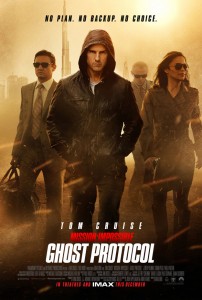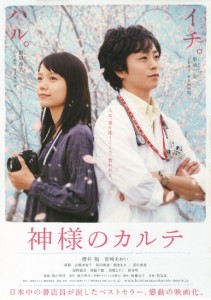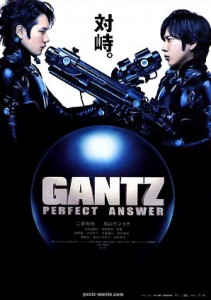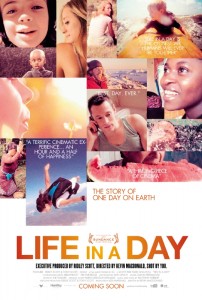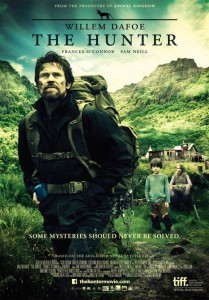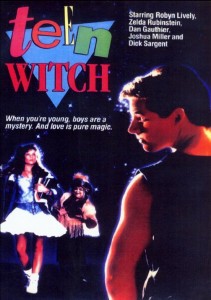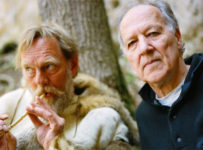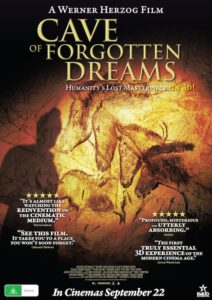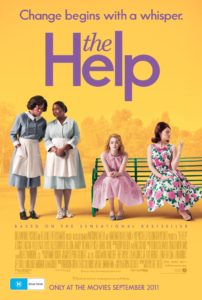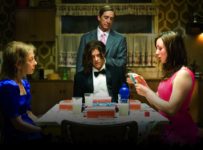[stextbox id=”grey” caption=”Mission: Impossible – Ghost Protocol (2011)” float=”true” align=”right” width=”200″]
Director: Brad Bird
Runtime: 132 minutes
Starring: Tom Cruise, Simon Pegg, Brad Bird, Paula Patton, Jeremy Renner, Michael Nyqvist
Distributor: Paramount
Country: US
Rating: Better Than Average Bear (?)
[/stextbox]
By the time a film series hits its fourth entry, it’s not just another sequel but a franchise entry. That comes with all the expectations and burdens of the previous chapters, for better or for worse. Based on the 1960s television series, Brian De Palma’s 1996 Mission: Impossible film refashioned the popular memory of the classic series into a taut modern action film. Despite its commercial success, John Woo’s sequel failed to connect with critics, pushing the boundaries a little too far and failing to add any substance to the style. The series got back on rails with J.J. Abrams’ debut film as a director used his sensibilities from TV’s Alias to reinvigorate the films, and it is Abrams who serves as a producer on this latest entry, Mission: Impossible – Ghost Protocol.
After a mission goes awry, and the Kremlin is bombed by terrorists, the IMF is disavowed and agent Ethan Hunt (Tom Cruise, Knight and Day) and his colleagues Benji Dunn (Simon Pegg, The Adventures of Tintin: The Secret of the Unicorn), Jane Carter (Paula Patton, Jumping the Broom) and analyst Brandt (Jeremy Renner, The Town) must fend for themselves. Ethan must not only clear his name, but hunt down the culprits behind the bombing, put a stop to an explosive nuclear plot by an extremist (Michael Nyqvist) and work with a team of operatives that he doesn’t fully know or trust yet.
Brad Bird may not habe been the most obvious choice for a big action epic, given that his background to this point has been with the superior animated films The Iron Giant, Ratatouille and The Incredibles. Yet Bird brings with him a kentic approach that has served to make his previous films a success, and in many ways this is the logical successor to The Incredibles. Coming to live action for the first time, Bird proves to be adept at handling large scale scenes, launching himself in at the deep end with massive set piece sequences using the large-format IMAX camera. These really come into their own during a sequence hanging off the world’s tallest building, the Burj Khalifa in Dubai. Instantly noticeable is the command that director Bird and his cinematographer Robert Elswit (The Town, Salt, There Will Be Blood) have of the large format screen. As the vertigo-inducing shots take us quite literally over the edge, Bird’s flawless command of action editing is something that sets this Mission: Impossible apart from previous entries.
It is the action that is first and foremost, after all, and while it is pleasing to see that an interesting and eclectic group of characters have been brought together for this film, including the surprising expansion of Simon Pegg’s Benji Dunn from Mission: Impossible III and the franchise-altering possibilities of Jeremy Renner, these character arcs are almost tangential to the moment-to-moment action that characterises this fourth outing. Lurching from mission to mission, the team scours the world from Moscow to Dubai and India, each place presenting a new background to do something really complicated in. Despite his success with the larger scenes, it is the smaller moments that do a pale imitation of the Bourne films, complete with wobble-cam. While incredibly cool, and undoubtedly borrowing from Bird’s animated background, there is also a sense of the familiar with a chase sequence in an automated parking lot.
Ghost Protocol doesn’t have the third film’s sense of a complex scheme running in the background, and Nyqvist’s generic evil guy is a poor substitute for the intensity of Philip Seymour Hoffman, and he too often gets lost in the background noise. Yet there is an energy that sustains the film, and flows naturally from the previous entry. It is pleasing to see that in a world populated by the extremes of increasingly dark and brutal action on one hand, and ridiculous over the top Transformers action on the other, there is still room for a globetrotting caper that mixes old-school charm with modern gadgetry.
[stextbox id=”custom”]Mission: Impossible – Ghost Protocol is a mission that you should choose to accept, sustaining much of the momentum of the previous entries and creating some new possibilities on the way.[/stextbox]
Mission: Impossible – Ghost Protocol is released in Australia on 15 December 2011 from Paramount.

